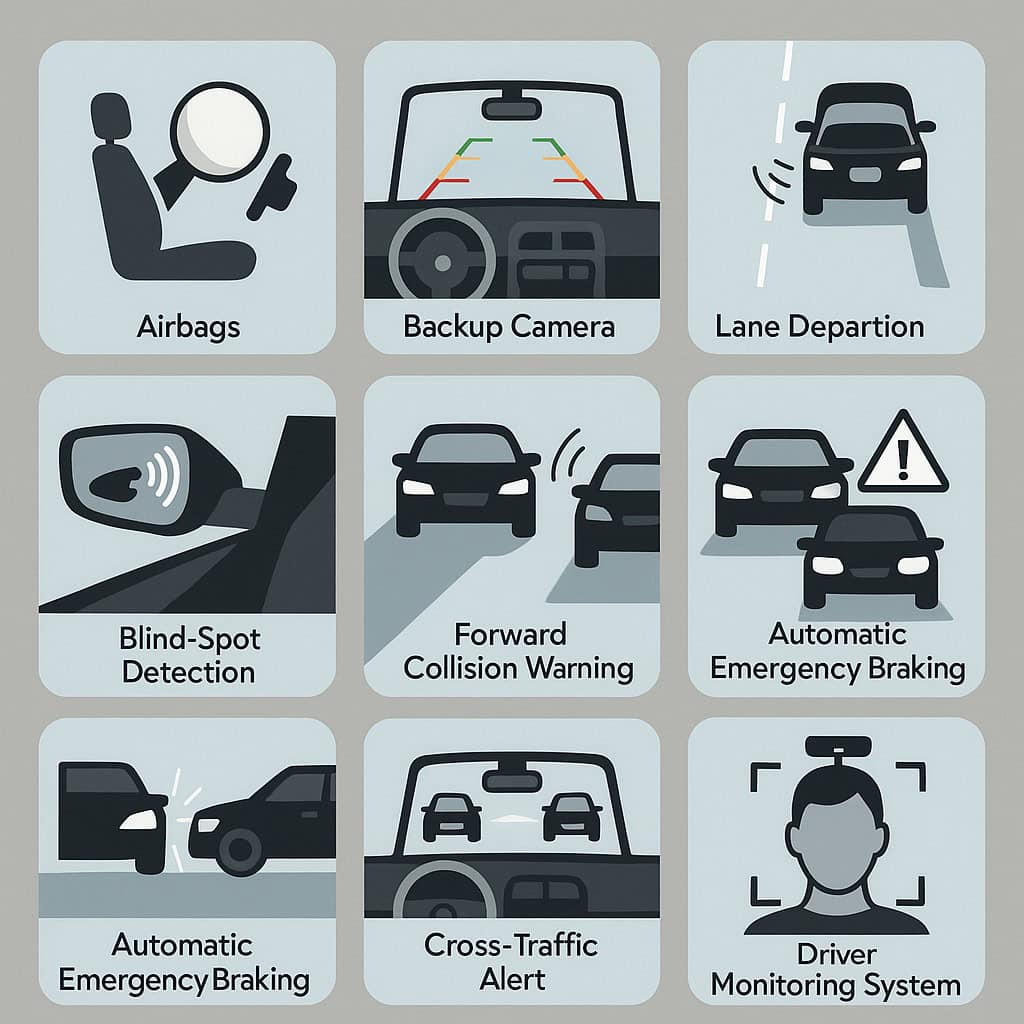
Automotive technology has made significant strides in enhancing road safety. Modern vehicles now come equipped with features designed not only to prevent collisions but also to reduce injury severity if an accident occurs. Understanding these safety technologies can help drivers make informed decisions and drive more safely.
1. Airbags
Airbags have been a standard safety feature for decades. Today’s systems adjust deployment force based on seating position and occupant size, offering better protection and reducing injury risk during collisions.
2. Backup Cameras
Required in all passenger vehicles since 2018, backup cameras help drivers see behind the vehicle, reducing backover accidents. Enhanced systems include dynamic guidelines to assist with parking and maneuvering.
3. Lane Departure Technology
This system alerts drivers when their vehicle unintentionally drifts out of its lane, often due to fatigue or distraction. Some systems also provide steering assistance to return the vehicle safely to its lane.
4. Blind-Spot Detection
Sensors monitor areas beside and behind the vehicle that may not be visible to the driver. Alerts warn drivers of vehicles in blind spots, helping prevent side-impact collisions.
5. Adaptive Cruise Control
Adaptive cruise control maintains a set speed while adjusting to traffic ahead. It can slow or stop the vehicle if traffic conditions require, offering an extra layer of safety on highways.
6. Forward Collision Warning Systems
These systems detect potential collisions with vehicles or obstacles ahead. Drivers receive alerts, and some systems pre-charge brakes to reduce stopping distance and improve reaction time.
7. Automatic Emergency Braking
Automatic emergency braking engages when the driver cannot react in time to avoid a collision, helping prevent or reduce the severity of impacts.
8. Cross-Traffic Alert
Cross-traffic alerts detect approaching vehicles or pedestrians when reversing out of parking spaces, minimizing the risk of backover accidents.
9. Driver Monitoring Systems
Driver monitoring systems track behavior, such as eye movement and steering patterns, to detect drowsiness or distraction. Alerts encourage drivers to refocus or take breaks when necessary.
Incorporating these safety features can significantly reduce car accidents and improve overall road safety. For additional guidance on protecting yourself and others on the road, see practical tips after a car accident.
Image Sources: KFB Law
This article is for informational purposes only and does not constitute legal advice. Consult a qualified attorney for guidance specific to your situation.

